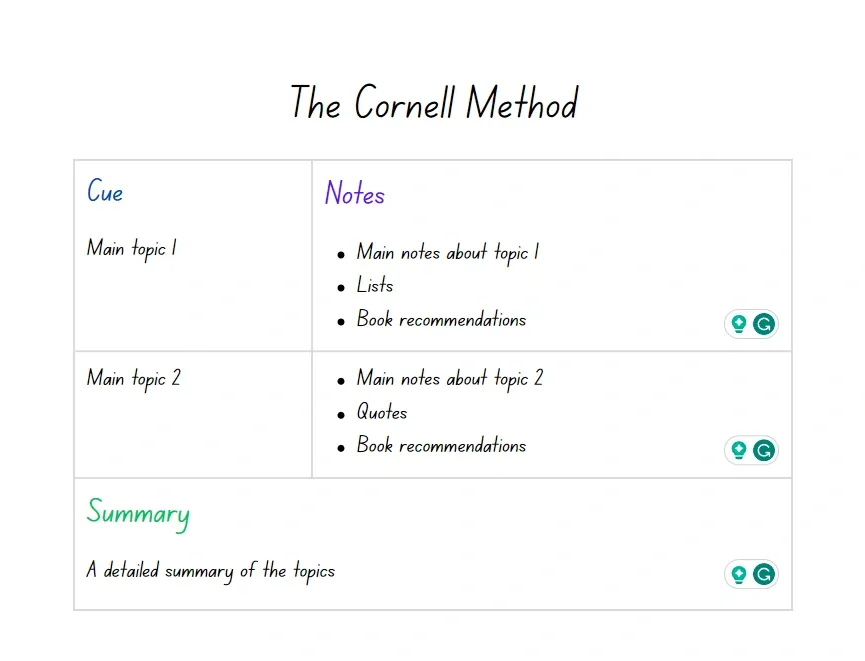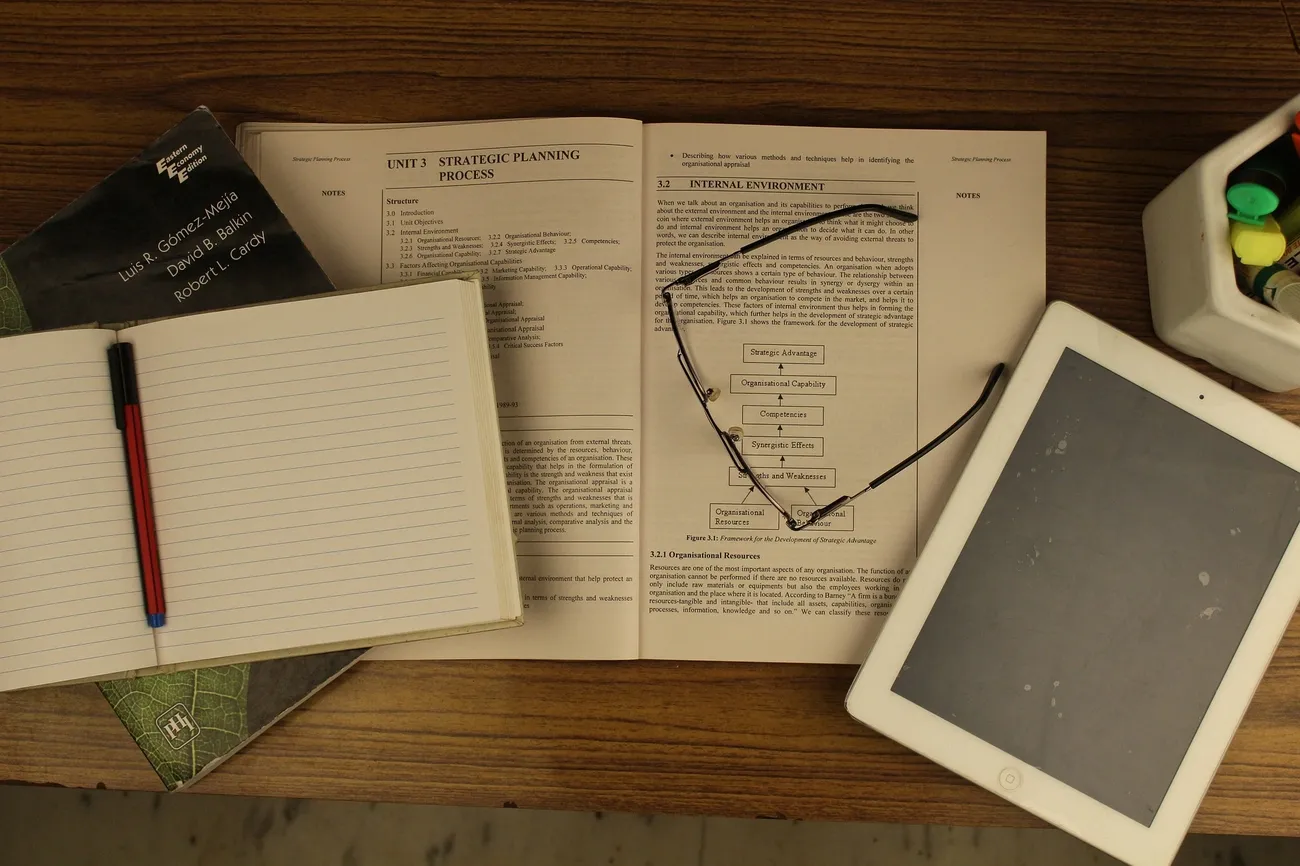How I Mastered Note Taking Methods: A Student’s Guide to Actually Remember What You Learn
Note taking methods can shape your path to academic success. Research shows students learn better when they take notes by hand instead of typing on laptops . Many students still find it hard to capture key information from their lectures.
Your notes’ quality shapes how well you grasp and remember information . Good note-taking helps you listen better, understand the material, and retain what you learn . Students who take good notes in class create better study materials and stay more focused . The right strategy that matches your learning style makes all the difference.
This piece shows you the methods that changed how I learn, and ways you can use these note-taking approaches to remember more. You’ll learn everything from getting ready before class to picking between pen and paper or digital tools – all to help you create notes that work best for you.
How I Prepared to Take Better Notes
My note-taking effectiveness improved when I prepared properly before class. Students who prepare before lectures retain 50-80% more information compared to those who don’t [1]. Here’s how I reshaped my preparation routine:
Previewing materials before class
My note-taking experience changed when I started previewing course materials before lectures. The 80-20 rule of college learning became clear to me—high school teachers provide 80% of information while students handle 20%. This ratio completely flips in college [1].
My preview routine now has:
- Reading assigned chapters (or at least skimming them)
- Reviewing the syllabus to understand upcoming topics
- Looking through previous lecture notes to connect ideas
- Checking any available lecture slides
This preview strategy creates a mental roadmap of the content [2]. Students can identify new concepts versus familiar information easily. Familiarity with terminology beforehand reduces confusion during lectures [3].
Organizing notebooks and digital folders
A well-organized system helps students learn better. My notebook organization matched my specific needs perfectly [4].
I reviewed how I would use my notebook—whether for meeting notes, brainstorming, or tracking assignments [4]. The right notebook format came next (hardcover for portability, spiral-bound for desk use) [4].
My digital materials needed a simple filing system with clear labels for each course. The first week of class required 30 minutes to organize all digital materials [5]. Students no longer waste time searching for notes before exams with this system.
Setting goals for each lecture
My approach to each class changed completely with specific goals. SMART goals (Specific, Measurable, Achievable, Relevant, Time-bound) made note-taking better [5].
Each lecture needs clear learning objectives. The number of symbols or abbreviations used per lecture helps track progress [5]. These measurable goals let students adjust their strategies based on results.
Every goal needs a timeline. “I want to master the Cornell Note-Taking System by the end of next semester” serves as a good example [5]. Clear deadlines create urgency. Students work harder to improve their note-taking skills without procrastination.
In-Class Note Taking Strategies That Worked
Active listening changed my classroom experience completely. I stopped writing everything down and learned to capture what mattered through specific strategies.
Listening for signal words and key ideas
Learning to spot signal words made a huge difference in my note-taking. My professors used phrases like “three causes of,” “the key differences,” and “most important” to point out vital information [6]. My ears picked up changes in tone, pitch, and emphasis that usually meant something important.
Paying attention to transitional phrases helped me organize my notes better. Words like “first,” “next,” and “finally” showed sequence, while “but,” “although,” and “on the other hand” pointed to contrasting ideas [6]. Our brains work faster than people speak, so I used this extra thinking time to process information instead of letting my mind wander [7].
Using abbreviations and symbols
A personal shorthand system made my note-taking much faster. My original system had consistent abbreviations for common terms in each course. I used “+” for “and,” “→” for “leads to,” “=” for “equals,” and “≠” for “does not equal” [8].
These time-saving tricks worked well:
- Omitting vowels (mgmt = management, dvpt = development)
- Using symbols (! for important, ??? for confusing concepts)
- Dropping articles and conjunctions (the, a, and, but)
- Creating course-specific abbreviations (eco = ecology, gov = government)
Staying consistent was key—I kept a legend of my abbreviations to avoid confusion during review [8].
Highlighting confusing points for follow-up
Marking unclear concepts helped me learn better. My system included question marks in margins next to confusing material [9]. I circled unfamiliar terms to look up later and starred topics that needed more study.
This method let me stay focused during lectures without getting stuck on difficult concepts. Rather than interrupting, I wrote down my questions and got answers later through textbook review or during office hours [10].
7 Note Taking Methods I Tried (And What Worked)

Image Source: Notta
My academic experience led me to try different note-taking methods to match my learning style. Each approach brought its own advantages based on course material and lecture format.
1. Cornell Method
The Cornell method splits your page into three sections: a narrow left column for keywords, a wider right column for notes, and a bottom section for summaries. This well-laid-out approach helped me organize information and created ready-to-use study materials. The system works great but needs prep time before lectures, which makes it tough for spontaneous note-taking [11].
2. Outline Method
The outline method let me organize information in a hierarchy with main topics and indented subtopics. My notes turned into easy study questions that showed clear relationships between ideas. This method works best for subjects with clear structures. The approach becomes challenging in ever-changing or unstructured lectures [12].
3. Mapping Method
The mapping method creates visual representations with the main topic at the center and related ideas branching out. This visual approach helped me spot connections between concepts right away. The method works great for brainstorming sessions but demands focus during live lectures [13].
4. Charting Method
Charts organize information into tables where rows and columns represent different categories. This method excels at comparing information with similar characteristics, especially in fact-heavy subjects. The need to identify categories beforehand limits flexibility during class [14].
5. Boxing Method
The boxing method groups related information in separate boxes. This newer technique shines in digital note-taking. Boxing pushed me to review notes twice—first while writing and again during box creation [15].
6. Sentence Method
This simple approach puts each new thought on its own numbered line. The method proves valuable during quick-moving lectures where structured approaches don’t work. These notes often need reorganization later [16].
7. Flow-Based Method
Flow-based notes capture information naturally and connect concepts with arrows, unlike structured methods. This style emphasizes learning over transcription during class. The method helped me learn actively, though sometimes I missed some details [17].
Skyline Academic Resources has detailed guides on these note-taking methods and many more study materials.
Handwritten vs Digital: What Helped Me Remember More

Image Source: Study Breaks
The choice between pen and paper versus digital devices has a huge impact on how we learn. My experience with both methods taught me fascinating things about memory and retention.
How handwriting improved my focus
Research shows handwriting activates widespread brain connectivity patterns that help form memories [18]. This deeper mental engagement explains why I understood my tough courses better when I took notes by hand. The slower pace of writing made me summarize concepts in my own words, which helped me learn better [19]. Hand-written notes also kept me away from the digital distractions that often disrupted my attention during lectures [19].
Digital notes gave me speed when I needed it
My switch to digital happened as courses became more demanding. People can type faster than they write, which let me keep up with fast-paced lectures [19]. Digital notes had clear advantages – I could search through them quickly, access them on any device, and organize them easily [20]. The ability to add images and diagrams instantly saved me lots of time compared to drawing them by hand [20].
A hybrid system that works perfectly
The real breakthrough came when I combined both methods smartly. Now I write by hand to learn new concepts and create mind maps, then move the key points to digital format to stay organized [21]. I spend 15 minutes each day to review and digitize the important parts of my handwritten notes [22]. Skyline Academic Resources offers tools and templates for both handwritten and digital note-taking systems. Visit our website to explore these resources.
Conclusion
You’ll find the quickest way to take notes by discovering what matches your learning style. Good preparation, active listening in class, and organizing your notes afterward will change your academic experience. This piece explores seven methods, each with its own advantages based on your course material and priorities.
Cornell notes give you structure. Mind mapping helps you connect concepts visually. The outline method works great with hierarchical information. Flow-based notes let you capture information as it comes.
Testing both handwritten and digital methods might show you that mixing them gives the best results. Writing by hand helps you understand and remember things better. Digital tools make organizing and finding your notes easier. You can mix these methods based on what your courses need.
Becoming skilled at note-taking needs practice and fine-tuning. Start with one new technique at a time instead of changing everything at once. You can find complete note-taking guides, templates, and academic help at Skyline Academic Resources [link].
Getting better at note-taking takes patience, but your grades will show it’s worth the effort. Using these strategies regularly will help you capture, understand, and remember information better. These skills will help you through school and beyond.
FAQs
Q1. What are the most effective note-taking methods for students?
There are several effective methods, including the Cornell Method, Outline Method, and Mapping Method. The best method depends on your learning style and the subject matter. Experiment with different techniques to find what works best for you.
Q2. Is it better to take notes by hand or digitally?
Both have advantages. Handwriting can improve focus and memory retention, while digital notes offer speed and easy organization. Many students find success with a hybrid approach, using handwritten notes for initial learning and digital tools for organization and review.
Q3. How can I prepare to take better notes in class?
Preview course materials before class, organize your notebooks or digital folders, and set specific learning goals for each lecture. This preparation helps create a mental roadmap of the content and improves your ability to identify key information during the lecture.
Q4. What strategies can I use to take better notes during class?
Listen for signal words and key ideas, use abbreviations and symbols to write faster, and highlight confusing points for later follow-up. Active listening and developing a personal shorthand system can significantly improve your note-taking efficiency.
Q5. How often should I review and revise my notes?
Regular review is crucial for retention. Consider setting aside time daily to review your notes, especially within 24 hours of taking them. Additionally, establish a weekly routine to organize and summarize your notes, which will help reinforce the material and prepare you for exams.
References
[1] – https://success.rice.edu/ssi-advising/student-resources/study-skills/note-taking
[2] – https://www.rochester.edu/college/learningcenter/studying/blog/2023-10-18-art-of-pre-reading-and-post-reading.html
[3] – https://www.utsc.utoronto.ca/learningstrategies/preparing-lecture
[4] – https://rebelsguidetopm.com/how-to-organize-a-notebook-for-work/
[5] – https://successindepth.com/smart-goals-for-note-taking/
[6] – https://www.tompkinscortland.edu/lecture-note-taking-strategies
[7] – https://www.usu.edu/academic-support/note_taking/active-listening
[8] – https://www.adelaide.edu.au/writingcentre/ua/media/67/learningguide-notetakingabbreviations.pdf
[9] – https://mcgraw.princeton.edu/undergraduates/resources/resource-library/take-great-notes
[10] – https://info.lse.ac.uk/current-students/Assets/Articles/10-Tips-on-note-taking-during-lectures
[11] – https://lsc.cornell.edu/how-to-study/taking-notes/cornell-note-taking-system/
[12] – https://subjectguides.york.ac.uk/note-taking/outline
[13] – https://sheridancollege.libguides.com/takingnotesmodule/taking-notes-in-class/concept-mapping
[14] – https://subjectguides.york.ac.uk/note-taking/charting
[15] – https://www.goodnotes.com/blog/boxing-note-taking-method
[16] – https://subjectguides.york.ac.uk/note-taking/sentence
[17] – https://law-hawaii.libguides.com/notetaking/flowbased
[18] – https://www.scientificamerican.com/article/why-writing-by-hand-is-better-for-memory-and-learning/
[19] – https://karmajack.com/handwritten-notes-vs-digital-notes-6/
[20] – https://blog.box.com/advantages-of-using-a-digital-note-taking-app
[21] – https://get.mem.ai/blog/handwritten-vs-digital-notes
[22] – https://blog.workflowy.com/how-to-integrate-paper-and-digital-note-taking/


